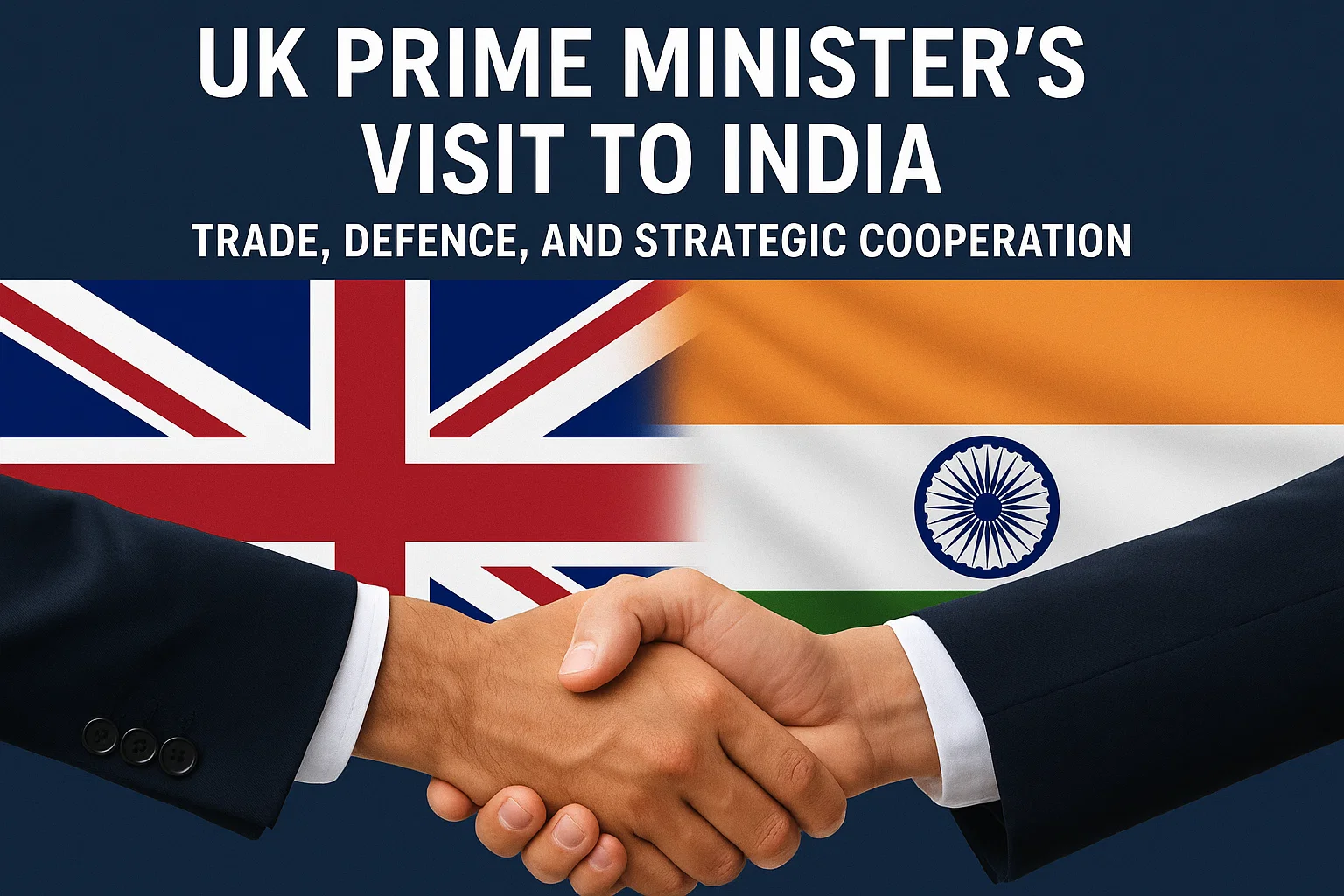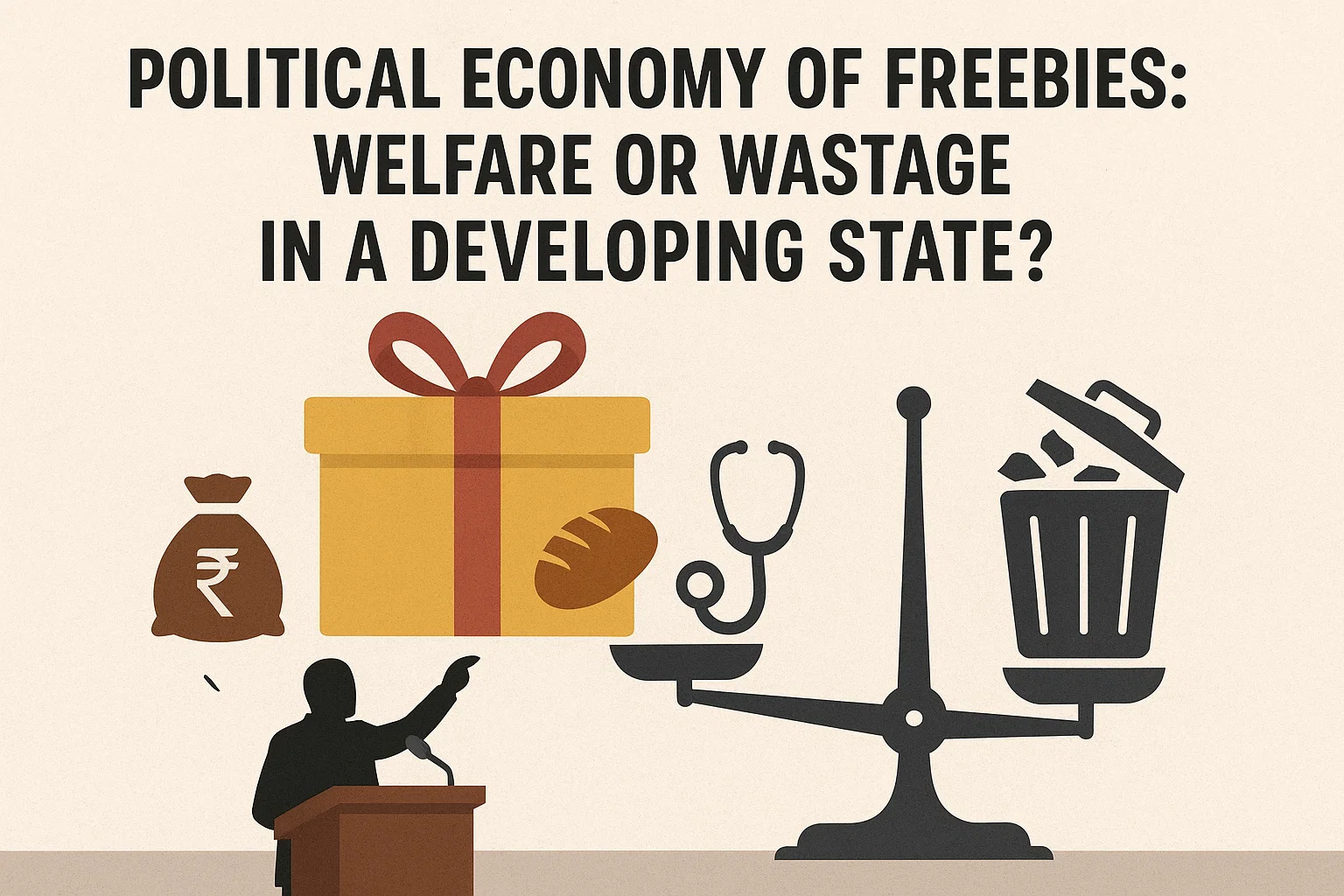From Rules-Based Order to Geopolitical Disorder: Challenges to Global Stability and India’s Strategic Imperatives
Rules-Based Order in Decline: Unravelling Global Stability and India’s Critical Role
Introduction: The post-World War II rules-based international order is facing unprecedented strain due to geopolitical rivalries, leader-led disruption, and systemic internal weaknesses in major powers. A convergence of factors — from disruptive leadership and emerging conflicts to resurgent terrorism and regional instability — has created a situation akin to a “shambolic disorder”, replacing the earlier vision of stable global governance.
Global Shifts: From Hegemony to Disruption
- Erosion of U.S. Global Leadership
- Since 1945, the U.S. was seen as the fountainhead of democracy and stability, but today it appears internally divided and externally inconsistent.
- Trumponomics has introduced a transactional approach to foreign policy, including:
- A new tariff war, unsettling global trade.
- Internal economic impacts, including GDP decline.
- Attacks on premier universities like Harvard and Columbia.
- Hostile visa policies targeting foreign students, risking over $40 billion in annual contributions and 400,000+ jobs.
- These policies are generating a “cauldron of unexpected consequences”, diminishing the credibility and consistency of American leadership.
- Leader-Led Global Disruption
- Global disruption is increasingly being led by influential individuals such as:
- Donald Trump (U.S.)
- Xi Jinping (China)
- Vladimir Putin (Russia)
- Volodymyr Zelenskyy (Ukraine)
- Their actions challenge the status quo, deepening conflict and geopolitical instability.
- This emerging phenomenon marks a departure from 20th-century turbulence, pointing towards a new global disorder.
- Global disruption is increasingly being led by influential individuals such as:
Regional Flashpoints and Strategic Turmoil
- Europe and NATO Under Stress
- The ongoing Russia-Ukraine war has entered its third year, despite diplomatic efforts.
- Europe now faces:
- Strategic ambiguity about the future of NATO.
- Growing criticism from the U.S. over its defence capabilities.
- Weakening cohesion within the European Union.
- West Asia: Escalation and Geostrategic Redrawing
- Israel’s offensive in Gaza and beyond is being termed as a virtual pogrom.
- U.S. and Western inaction towards Benjamin Netanyahu’s actions has emboldened unilateral Israeli moves.
- Israel is:
- Violating ceasefire agreements.
- Seeking permanent positions in Syria.
- Attempting to redraw regional geography for territorial gain.
- Syria, under Ahmed al-Shara, faces systemic collapse: disbanded military, purged civil services, and dissolved political structures.
- Potential Israeli strike on Iran to eliminate nuclear capabilities threatens wider conflict.
- Africa and the Islamic State’s Resurgence
- Islamic State (IS) affiliates are shifting operations to:
- Mozambique
- Democratic Republic of Congo
- North Africa
- Afghanistan
Their spread signals a revival of global terrorism and a new wave of violent extremism.
India’s Strategic Calculus in an Uncertain World
- India stands at a critical juncture, surrounded by instability and rising threats on multiple fronts.
- Strategic imperatives for India include:
- Vigilance against regional terrorism and proxy warfare.
- Diplomatic engagement with neighbours to manage internal unrest spillover.
- Strengthening maritime security to counter Chinese assertiveness.
- Deepening strategic partnerships with like-minded democracies to ensure balance of power in Asia.
- Enhancing intelligence and counter-terrorism mechanisms to deal with resurgent IS and affiliated groups.
Sustaining efforts for a stable and multi-aligned foreign policy in an increasingly fragmented global order.
Asia in Flux: Overlapping Threats and Power Realignments
- South and Central Asia: Instability and Terrorism
- Afghanistan and Pakistan face:
- Internal turmoil
- Crosshairs of revived terror groups
- Recent terror incidents highlight the threat, including the April 22 Pahalgam attack in Kashmir, killing 26 tourists.
- New affiliates of al-Qaeda and IS are expanding their influence, forming new terror networks.
- Afghanistan and Pakistan face:
- East of India: Internal Unrest in Neighbourhood
- Nations like Bangladesh, Nepal, and Myanmar are facing diverse internal challenges, ranging from political unrest to ethnic tensions.
- These issues reduce regional coherence and increase vulnerability to external influence.
- China’s Dual Strategy: Economic Adjustment and Military Assertion
- While tackling domestic economic issues, China is also:
- Preparing to counter U.S. tariff measures.
- Continuing its expansionist policy in Taiwan, albeit currently restrained.
- A peace offensive in Southeast Asia masks deeper intentions to dominate the regional order.
- India-China rivalry remains high despite apparent border détente in Ladakh.
- China is:
- Increasing naval and submarine presence in the Indian Ocean.
- While tackling domestic economic issues, China is also:
Extending influence beyond the nine-dash line into the South Pacific.


